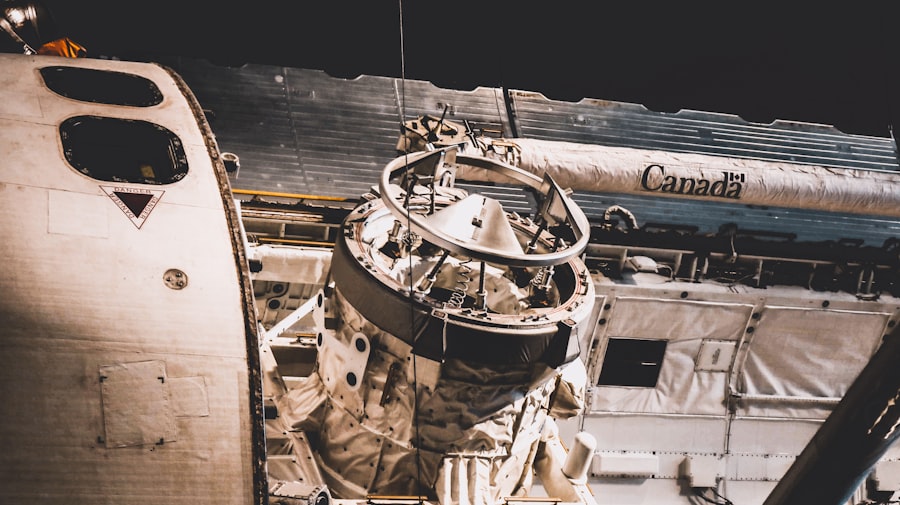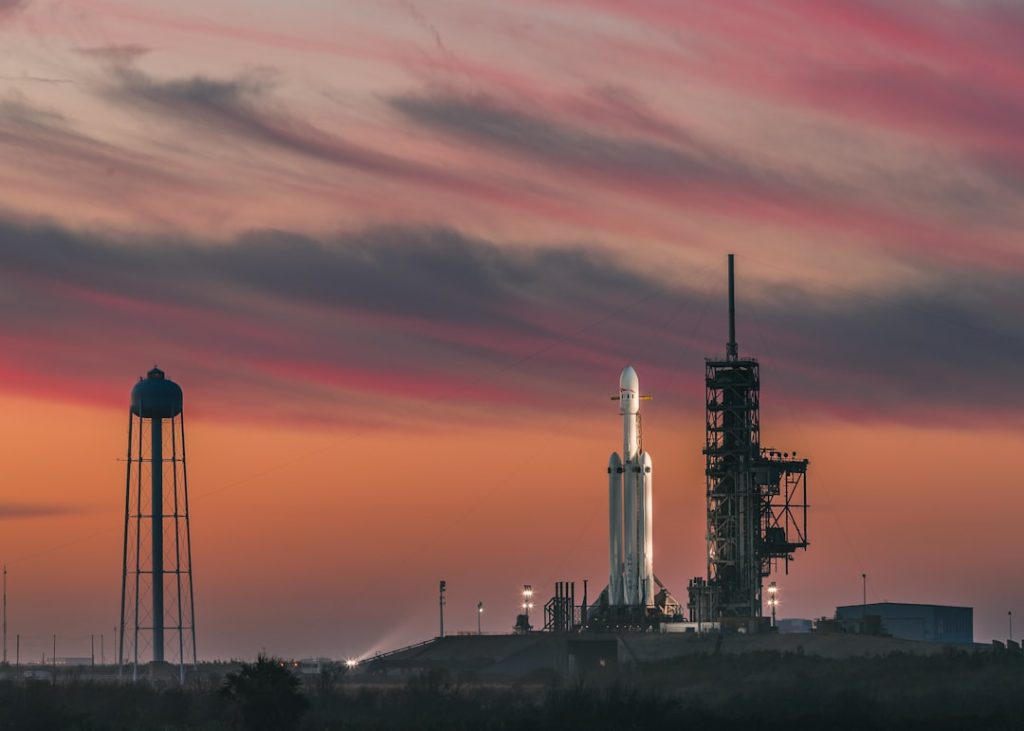The concept of space stations has evolved significantly since the dawn of the space age. The first serious proposals for a space station emerged in the 1940s and 1950s, during the early years of the Cold War. Visionaries like Hermann Oberth and Wernher von Braun envisioned large, rotating habitats that could support human life in orbit.
However, it wasn’t until the 1970s that the first functional space station, Salyut 1, was launched by the Soviet Union. This pioneering effort marked a significant milestone in human space exploration, as it allowed astronauts to live and work in space for extended periods. Following Salyut 1, several other Soviet space stations were launched, including the Salyut series and later the Almaz military stations.
The United States entered the fray with its own Skylab, which was launched in 1973. Skylab was America’s first space station and served as a platform for scientific research and experimentation. It hosted three crewed missions before re-entering Earth’s atmosphere in 1979.
The lessons learned from these early endeavors laid the groundwork for future space stations, culminating in the development of the International Space Station (ISS), which began construction in 1998 and has since become a symbol of international cooperation in space.
Key Takeaways
- Space stations have a rich history dating back to the 1970s, with the Soviet Union launching the first space station, Salyut 1, in 1971.
- The International Space Station (ISS) is a collaborative effort involving multiple countries, including the United States, Russia, Europe, Japan, and Canada.
- Living and working in space presents unique challenges, but also offers rewards such as scientific discoveries and technological advancements.
- The future of space stations involves new technologies and innovations, such as inflatable habitats and 3D printing for construction in space.
- Space stations play a crucial role in space exploration by serving as a platform for scientific research, technology development, and international cooperation.
The International Space Station: A Collaborative Effort
The International Space Station represents one of humanity’s most ambitious collaborative projects, involving multiple countries and space agencies. The ISS is a joint venture primarily between NASA (United States), Roscosmos (Russia), ESA (European Space Agency), JAXA (Japan), and CSA (Canada). This partnership has allowed for a pooling of resources, expertise, and technology, resulting in a state-of-the-art laboratory orbiting Earth at an altitude of approximately 400 kilometers.
Construction of the ISS began with the launch of its first module, Zarya, in 1998. Over the years, additional modules were added, each contributing to the station’s capabilities. The collaborative nature of the ISS is evident not only in its construction but also in its operation.
Astronauts from various countries live and work together aboard the station, conducting experiments that benefit all of humanity. This spirit of cooperation extends beyond scientific research; it fosters diplomatic relations and cultural exchange among nations that might otherwise be at odds.
Living and Working in Space: The Challenges and Rewards

Life aboard a space station presents unique challenges that require astronauts to adapt quickly to their new environment. One of the most significant challenges is microgravity, which affects everything from bodily functions to daily tasks. Astronauts experience muscle atrophy and bone density loss due to the lack of gravitational force acting on their bodies.
To counteract these effects, astronauts engage in regular exercise using specialized equipment designed for use in microgravity. In addition to physical challenges, astronauts must also navigate psychological hurdles. The confined living quarters and isolation from Earth can lead to feelings of loneliness and stress.
To mitigate these issues, crew members are trained in teamwork and conflict resolution, and they have access to communication tools that allow them to stay connected with family and friends back home. Despite these challenges, living and working in space offers unparalleled rewards. Astronauts have the opportunity to conduct groundbreaking scientific research that can lead to advancements in medicine, technology, and our understanding of fundamental physics.
The Future of Space Stations: New Technologies and Innovations
| Aspect | Metrics |
|---|---|
| Size | Increased capacity for crew and research equipment |
| Technology | Advanced life support systems and recycling technologies |
| Research | Expanded capabilities for scientific experiments and observations |
| Construction | Modular and reusable components for easier assembly and maintenance |
| Transportation | Improved spacecraft for crew and cargo transportation to and from the station |
As we look to the future, advancements in technology promise to revolutionize space stations and their capabilities. One area of innovation is the development of modular space stations that can be expanded or reconfigured as needed. This flexibility allows for a more dynamic approach to space habitation, accommodating various missions and research objectives.
Companies like Axiom Space are already planning to build commercial modules that will attach to the ISS, paving the way for a new era of private space exploration. Another exciting development is the potential for autonomous systems to enhance operations aboard space stations. Robotics and artificial intelligence can assist astronauts with routine tasks, allowing them to focus on more complex scientific experiments.
For instance, robotic arms can perform maintenance tasks or assist with experiments, reducing the workload on human crew members. Additionally, advancements in life support systems are being explored to create more sustainable environments for long-duration missions, including recycling water and air more efficiently.
The Role of Space Stations in Space Exploration
Space stations play a crucial role in advancing our understanding of space and preparing for future exploration missions beyond low Earth orbit. They serve as testbeds for technologies that will be essential for long-duration missions to destinations like Mars or asteroids. For example, experiments conducted on the ISS have provided valuable insights into how human bodies respond to extended periods in microgravity, informing plans for future missions where astronauts will spend months or even years away from Earth.
Moreover, space stations facilitate international collaboration on exploration initiatives. The ISS has already hosted numerous experiments related to deep-space travel, including studies on radiation exposure and psychological resilience during long missions. These findings are critical as we prepare for ambitious goals such as establishing a human presence on Mars or exploring the outer planets.
By leveraging the knowledge gained from current space stations, we can develop more effective strategies for future exploration endeavors.
Space Tourism: Visiting a Space Station

The concept of space tourism has transitioned from science fiction to reality in recent years, with private companies like SpaceX and Blue Origin leading the charge. As technology advances and costs decrease, visiting a space station is becoming an attainable dream for wealthy individuals seeking unique experiences beyond Earth’s atmosphere. The ISS has already hosted private astronauts who paid substantial sums for their journeys into orbit.
Space tourism not only opens up new avenues for adventure but also generates funding for ongoing research aboard space stations. By allowing private citizens to experience life in microgravity, we can raise awareness about space exploration and inspire future generations to pursue careers in science and engineering. Furthermore, as commercial space travel becomes more mainstream, it could lead to increased investment in infrastructure that supports long-term habitation in space.
The Potential for Space Stations to Support Life on Other Planets
The knowledge gained from operating space stations is invaluable when considering the potential for human life on other planets. Research conducted aboard the ISS has provided insights into how humans can survive and thrive in extraterrestrial environments. For instance, studies on plant growth in microgravity have implications for future agricultural practices on Mars or lunar bases.
Moreover, advancements in life support systems developed for space stations can be adapted for use on other planets. Closed-loop systems that recycle air and water will be essential for sustaining human life during long missions or colonization efforts. By understanding how to create self-sustaining habitats in space, we can take significant steps toward establishing permanent human settlements on celestial bodies.
The Ethical and Environmental Implications of Space Stations
As we continue to expand our presence in space through the development of space stations, it is crucial to consider the ethical and environmental implications of these endeavors. The construction and operation of space stations require significant resources and energy, raising questions about sustainability and environmental impact both on Earth and beyond. The potential for space debris is another concern; as more satellites and stations are launched into orbit, the risk of collisions increases.
Ethically, we must also consider who has access to these advanced technologies and opportunities. As commercial interests grow within the realm of space exploration, there is a risk that benefits may not be equitably distributed among nations or individuals. Ensuring that all countries have a voice in international space governance is essential to prevent conflicts over resources or territorial claims in outer space.
In conclusion, while the journey into the cosmos presents remarkable opportunities for scientific advancement and human exploration, it also necessitates careful consideration of our responsibilities as stewards of both our planet and the universe beyond it. As we forge ahead into this new frontier, it is imperative that we do so with an awareness of our ethical obligations and a commitment to sustainable practices that will benefit generations to come.


